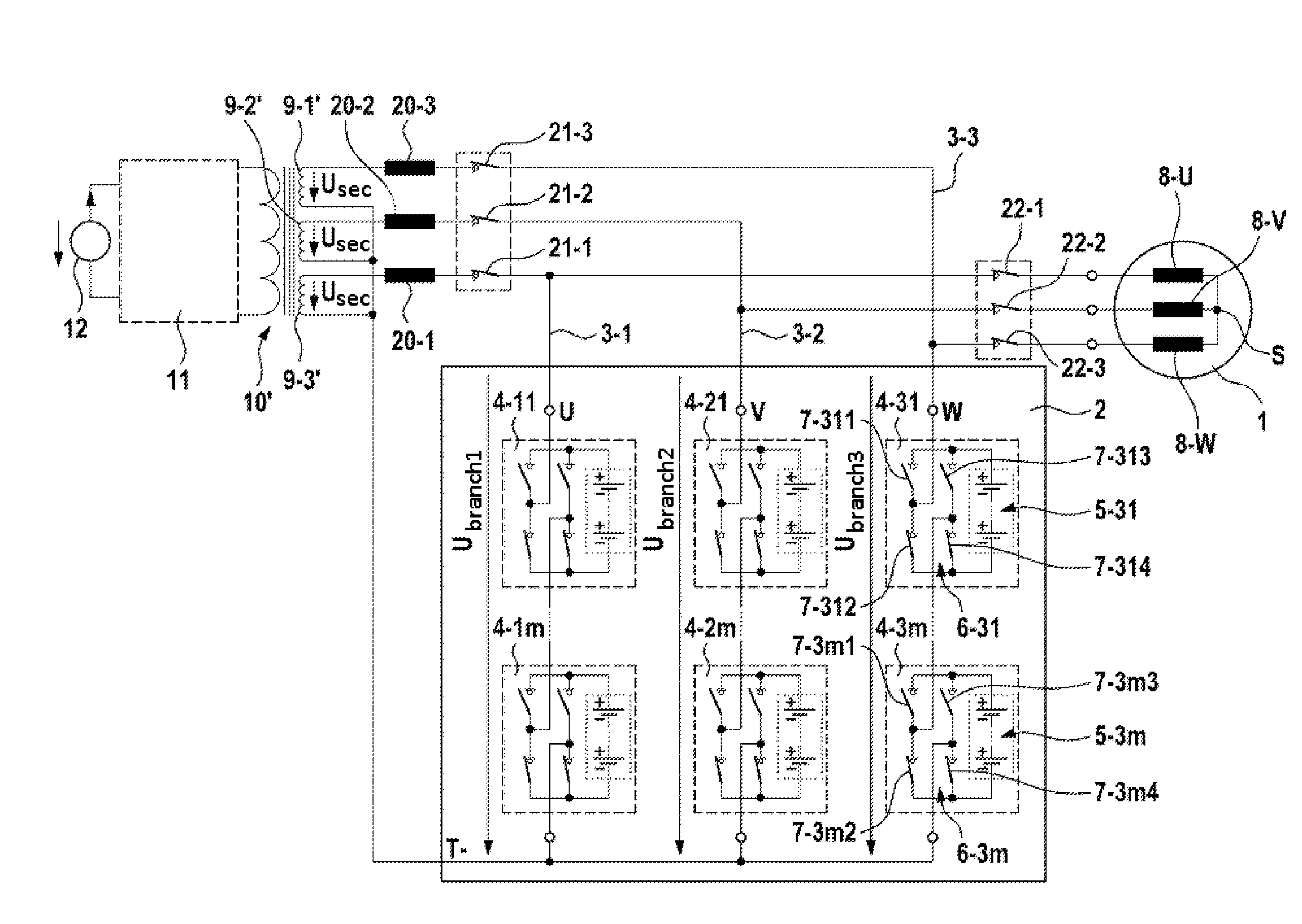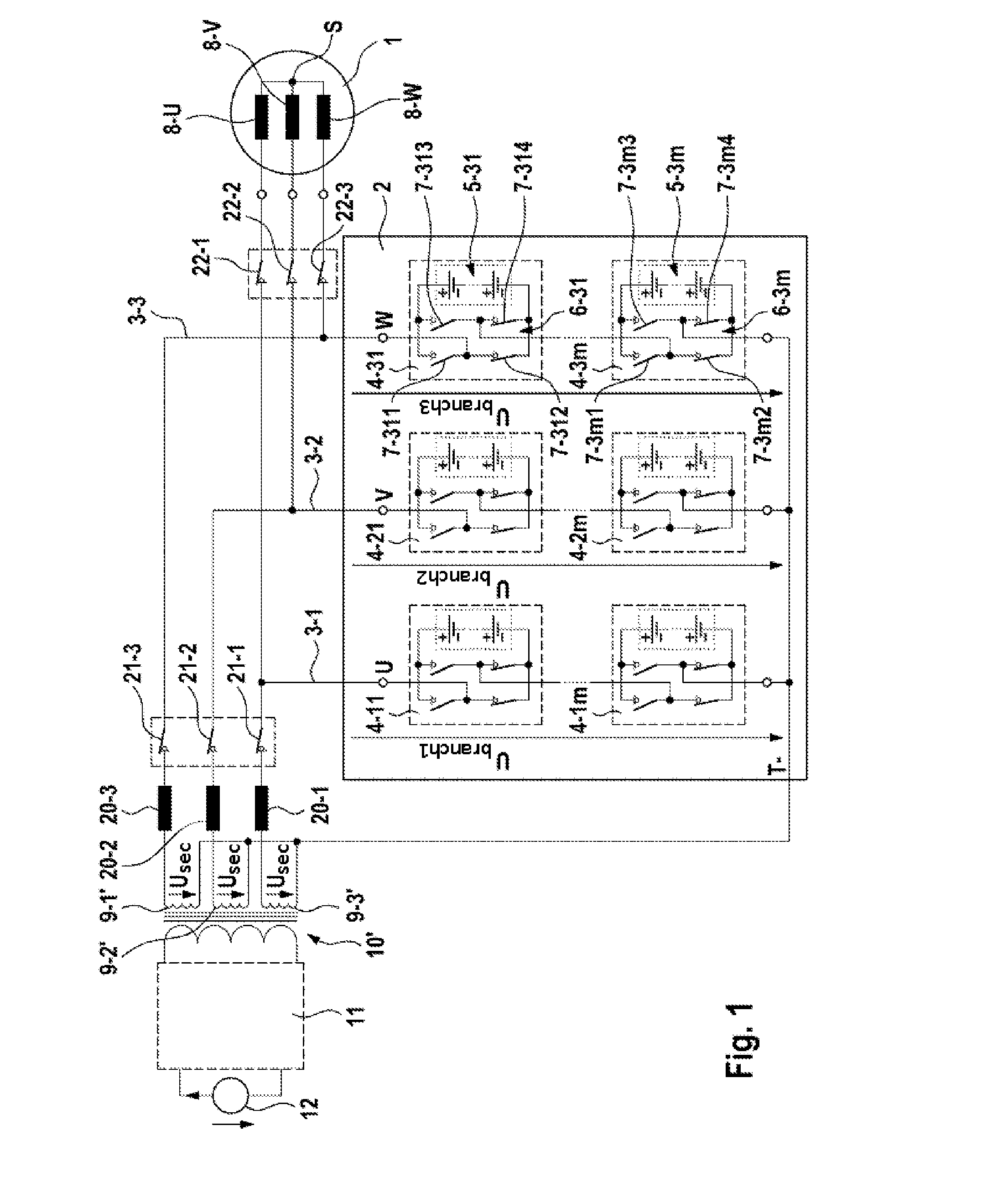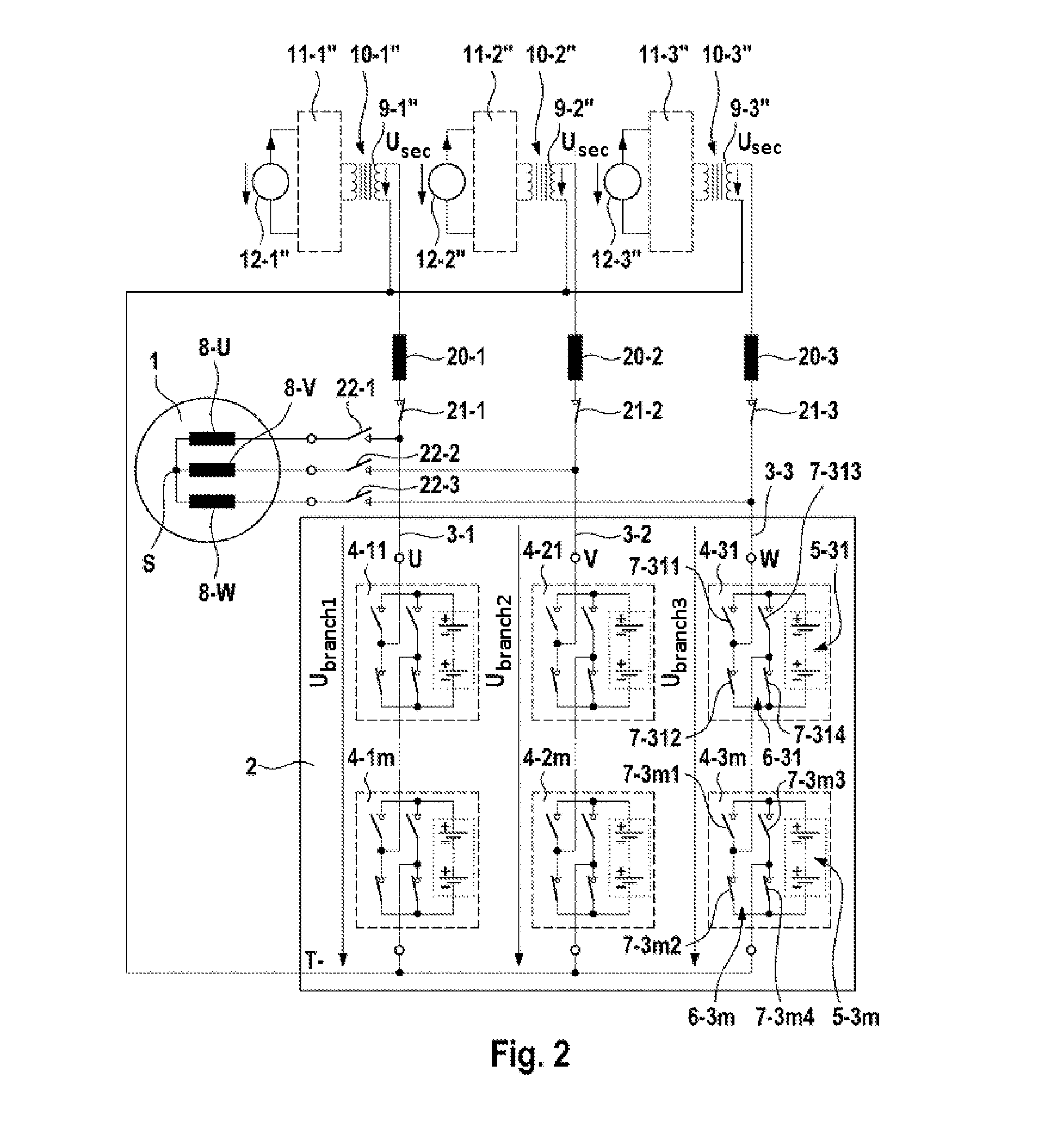Charging an energy store
a technology for charging energy and energy stores, applied in parallel/serial switching, dc-ac conversion without reversal, battery/cell propulsion, etc., can solve the problems of vehicle “unusability”, failure of the entire system, and failure of the energy store as a whole, so as to save installation space and cost.
- Summary
- Abstract
- Description
- Claims
- Application Information
AI Technical Summary
Benefits of technology
Problems solved by technology
Method used
Image
Examples
Embodiment Construction
[0018]FIGS. 1 and 2 show schematic illustrations of embodiments of a charging system of the invention. A controllable energy store 2 is connected to a three-phase electrical machine 1. The controllable energy store 2 comprises three energy supply branches 3-1, 3-2 and 3-3, which are connected on one side to a reference potential T- (reference rail), which supplies a low potential in the illustrated embodiments, and on the other side in each case to individual phases U, V and W of the electrical machine 1. Each of the energy supply branches 3-1, 3-2 and 3-3 have m series-connected energy storage modules 4-11 to 4-1m or 4-21 to 4-2m or 4-31 to 4-3m, where m>2. In turn, the energy storage modules 4 comprise in each case a plurality of series-connected electrical energy storage cells, which, for reasons of clarity, are only provided with reference signs 5-31 to 5-3m in the energy supply branch 3-3 connected to the phase W of the electrical machine 1. Furthermore, the energy storage modu...
PUM
 Login to View More
Login to View More Abstract
Description
Claims
Application Information
 Login to View More
Login to View More - R&D
- Intellectual Property
- Life Sciences
- Materials
- Tech Scout
- Unparalleled Data Quality
- Higher Quality Content
- 60% Fewer Hallucinations
Browse by: Latest US Patents, China's latest patents, Technical Efficacy Thesaurus, Application Domain, Technology Topic, Popular Technical Reports.
© 2025 PatSnap. All rights reserved.Legal|Privacy policy|Modern Slavery Act Transparency Statement|Sitemap|About US| Contact US: help@patsnap.com



